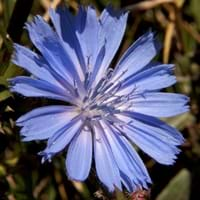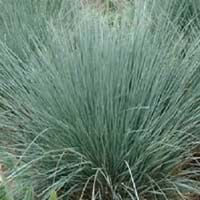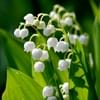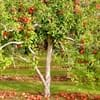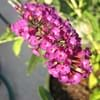Life Span
Perennial
Perennial
Type
Flowering Plants, Shrubs, Vegetable
Ornamental Grasses and Bamboo
Origin
Mediterranean
Southern Europe, Western Europe, Mediterranean
Types
Belgian Endive, Red Belgian Endive, Curly Endive (a.k.a. Frisee), Escarole, Radicchio (Chioggia) and Radicchio (Chioggia)
Not Available
Number of Varieties
Not Available
Habitat
Grassland, Mediterranean region, Wild
Desert, Dry areas, Dry Forest, Rocky areas
USDA Hardiness Zone
3-9
4-9
Sunset Zone
A1, A2, A3, H1, H2, 1a, 1b, 2a, 2b, 3a, 3b, 4, 5, 6, 7, 8, 9, 10, 11, 12, 13, 14, 15, 16, 17, 18, 19, 20, 21, 22, 23, 24
1a, 1b, 2a, 2b, 3a, 3b, 4, 5, 6, 7, 8, 9, 10, 11, 14, 15, 16, 17, 18, 19, 20, 21, 22, 23, 24
Habit
Clump-Forming
Cushion/Mound-forming
Flower Color
Blue
Blue Green
Flower Color Modifier
Not Applicable
Bicolor
Fruit Color
Brown
Not Available
Leaf Color in Spring
Green
Blue Green, Silver, Gray
Leaf Color in Summer
Green
Light Green
Leaf Color in Fall
Green
Blue Green, Silver, Gray
Leaf Color in Winter
Green
Blue Green, Tan, Silver, Gray
Leaf Shape
Oblong
Grass like
Plant Season
Summer
Spring, Summer, Fall, Winter
Sunlight
Full Sun, Part sun
Full Sun
Growth Rate
Medium
Medium
Type of Soil
Loamy, Sandy
Clay, Loam, Sand
The pH of Soil
Acidic, Alkaline, Neutral
Neutral, Alkaline
Soil Drainage
Well drained
Well drained
Bloom Time
Summer
Late Spring, Early Summer
Tolerances
Not Available
Salt
Where to Plant?
Ground
Container, Ground
How to Plant?
Seedlings
Rooted stem cutting, Seedlings, Stem Planting
Plant Maintenance
Medium
Medium
Watering Requirements
Keep the ground moist but not water-logged, Prefer drip-irrigation instead of Over-head watering, Requires regular watering, Requires watering in the growing season
Average Water Needs, occasional watering once established, Requires regular watering, Requires watering in the growing season
In Summer
Lots of watering
Lots of watering
In Spring
Moderate
Moderate
In Winter
Average Water
Average Water
Soil pH
Acidic, Alkaline, Neutral
Neutral, Alkaline
Soil Type
Loamy, Sandy
Clay, Loam, Sand
Soil Drainage Capacity
Well drained
Well drained
Sun Exposure
Full Sun, Part sun
Full Sun
Pruning
Cut or pinch the stems, Prune prior to new growth, Prune to stimulate growth, Remove dead or diseased plant parts, Remove deadheads
Cut or pinch the stems, Pinch Tips, Remove damaged leaves, Remove dead branches, Remove dead leaves
Fertilizers
All-Purpose Liquid Fertilizer
All-Purpose Liquid Fertilizer
Pests and Diseases
Aphids, Loopers, Root rot, Viruses, Worms
Red blotch
Plant Tolerance
Drought
Salt
Flower Petal Number
Not Available
Single
Foliage Texture
Medium
Fine
Foliage Sheen
Matte
Matte
Attracts
Butterflies
Butterflies, Hummingbirds
Allergy
Not Available
Asthma, Itchiness, Rash, Rhinitis
Aesthetic Uses
Not Used For Aesthetic Purpose
Ground Cover
Beauty Benefits
Not Available
Not Available
Environmental Uses
Air purification
Air purification
Medicinal Uses
Cancer, Digestive disorders, Inflammation, Liver problems, Stomach pain
Not Available
Part of Plant Used
Leaves, Root
Stem
Other Uses
Used as an ingredient in coffee
Used as Ornamental plant
Used As Indoor Plant
No
No
Used As Outdoor Plant
Yes
Yes
Garden Design
Not Available
Container, Edging, Mixed Border, Rock Garden / Wall
Botanical Name
Cichorium intybus
HELICTOTRICHON sempervirens
Common Name
Blue daisy, blue dandelion, blue sailors, blue weed, bunk, coffeeweed, cornflower, hendibeh, horseweed, ragged sailors, succory, wild bachelor's buttons, and wild endive
Blue Oat Grass
In Hindi
कासनी
ब्लू जई घास
In German
Chicoree
Blau Ährengras
In French
chicorée
Bleu Oat Grass
In Spanish
achicoria
Azul hierba de avena
In Greek
ραδίκι
Μπλε βρώμης Grass
In Portuguese
chicória
Azul Aveia
In Polish
cykoria
Niebieski Owies trawa
In Latin
pancratium
Blue Oat Grass
Phylum
Magnoliophyta
Magnoliophyta
Class
Magnoliopsida
Liliopsida
Family
Asteraceae
Poaceae
Genus
Cichorium
Helictotrichon
Clade
Angiosperms, Asterids, Eudicots
Angiosperms, Commelinids, Monocots
Subfamily
Cichorioideae
Pooideae
Number of Species
Not Available
Not Available
Season and Care of Chicory and Blue Oat Grass
Season and care of Chicory and Blue Oat Grass is important to know. While considering everything about Chicory and Blue Oat Grass Care, growing season is an essential factor. Chicory season is Summer and Blue Oat Grass season is Summer. The type of soil for Chicory is Loamy, Sandy and for Blue Oat Grass is Clay, Loam, Sand while the PH of soil for Chicory is Acidic, Alkaline, Neutral and for Blue Oat Grass is Neutral, Alkaline.
Chicory and Blue Oat Grass Physical Information
Chicory and Blue Oat Grass physical information is very important for comparison. Chicory height is 3.00 cm and width 1.50 cm whereas Blue Oat Grass height is 45.00 cm and width 60.96 cm. The color specification of Chicory and Blue Oat Grass are as follows:
Chicory flower color: Blue
Chicory leaf color: Green
Blue Oat Grass flower color: Blue Green
- Blue Oat Grass leaf color: Blue Green, Silver and Gray
Care of Chicory and Blue Oat Grass
Care of Chicory and Blue Oat Grass include pruning, fertilizers, watering etc. Chicory pruning is done Cut or pinch the stems, Prune prior to new growth, Prune to stimulate growth, Remove dead or diseased plant parts and Remove deadheads and Blue Oat Grass pruning is done Cut or pinch the stems, Pinch Tips, Remove damaged leaves, Remove dead branches and Remove dead leaves. In summer Chicory needs Lots of watering and in winter, it needs Average Water. Whereas, in summer Blue Oat Grass needs Lots of watering and in winter, it needs Average Water.
